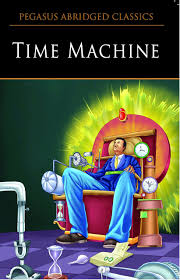Use this blog to share items of interest to those on the carfix_online mailing list. Note: Video and audio clips are not to be reproduced, duplicated, copied, for sale, trade, resell or exploit for any commercial purposes. If you like what you see here, why not Join our group at groups.io/g/carfixonline
Monday, January 25, 2021
Monday, January 18, 2021
Monday, January 11, 2021
Thursday, January 07, 2021
Sunday, January 03, 2021
Friday, January 01, 2021
Profiles in the Automotive industry:John J. Mooney, an Inventor of the Catalytic Converter
John Joseph Mooney (April 6, 1930 – June 16, 2020) was an American chemical engineer who was co-inventor of the three-way catalytic converter, which has played a dramatic role in reducing pollution from motor vehicles since their introduction in the mid-1970s.
While serving in the United States Army from 1955 to 1956, Mooney was assigned to a series of nuclear tests in the Pacific Ocean at Enewetak Atoll in the Marshall Islands, which included 17 atom bomb and two hydrogen bomb tests. Mooney was as close as 7½ miles from fission bomb tests.[1]
Mooney came to Engelhard in 1960, after graduate school, as a result of a connection made in an electrochemical engineering course. He worked at the company's Gas Equipment Division. Among his first tasks there were purification of hydrogen, purification and catalysis of ammonia into hydrogen and nitrogen and a process for using a ruthenium catalyst to produce hydrogen from liquid ammonia for the United States Air Force. As a result, the Air Force was able to easily supply hydrogen for weather balloons, since it was more efficient to ship liquid ammonia to distant locations than cylinders of gas.
The 1970 amendments to the Clean Air Act required significant reductions in hydrocarbon, carbon monoxide and nitrogen oxide emissions. The converters available at the time were oxidation catalysts, which could handle hydrocarbon and carbon monoxide, but were ineffective in reducing nitrogen oxides. Car manufacturers and catalyst companies were trying to develop a multiple step process that would address hydrocarbons and carbon monoxide in one process while reducing nitrogen oxides in another.
Chemist Carl D. Keith and Mooney with their team at Engelhard came up with the first production catalytic converter in 1973. The three-way catalyst developed by them allowed all three exhaust pollutants (hydrocarbon, carbon monoxide, and nitrogen oxides) to be remedied using a single catalyst bed. Their solution to addressing the variations in air/fuel mixtures was to combine rare-earth oxides and base metal oxide components in the catalyst together with Platinum and Rhodium in a ceramic honeycomb with tiny passages coated with the catalytic material. This design ensured that the oxygen needed in the reactions was absorbed when it was in excess and released when it was needed, allowing all three pollutants to be removed in a single catalytic component. The three-way catalytic converter reduces nitrogen oxides to nitrogen and oxygen, oxidizes carbon monoxide to carbon dioxide and oxidizes unburnt hydrocarbons to carbon dioxide and water.



